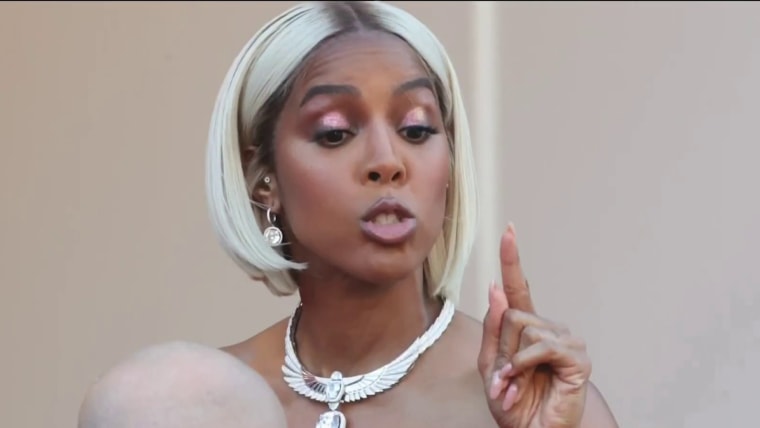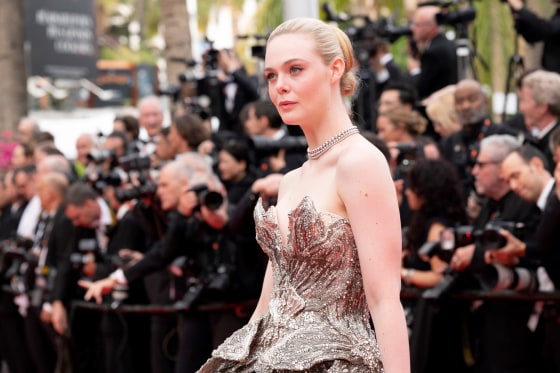This week, the Cannes Film Festival issued a new dress code forbidding “voluminous outfits” and “nudity” from the red carpet and theaters. Cannes is one of the most prestigious film festivals in the world. It is also one of the most culturally impactful events of the year. The cultural cachet provided by walking Cannes’ red carpet rivals that of a film winning the coveted Palme d’Or.
Cannes’ dress code is notoriously strict. Black tie and evening wear are required for nighttime screenings at the Grand Théâtre Lumière. Women have been turned away from the Palais for not wearing a heeled shoe. Taken at face value, this new rule, particularly the nudity component, might look innocuous, obvious even. But it’s erasing artistic opportunity, particularly for women attendees.
This new rule, particularly the nudity component, might look innocuous, obvious even. But it’s erasing artistic opportunity, particularly for women attendees.
Cannes’ red carpet has featured many beautifully executed sheer (or “nude,” as Cannes new dress code would likely call them) dresses, including on actress Elle Fanning and model Bella Hadid.Given the cultural reorientation toward conservatism across the Western world — especially in America — this new dress code reeks of control. If you believe, like I do, that true fashion reacts to and then pushes the boundaries of culture, then the rise of nude dressing is obvious and predictable. Nude outfits are not just a red carpet staple, they’re in vogue everywhere. Walk the streets of Brooklyn or go anywhere in Los Angeles and you will see sheer maxi skirts paired with intentional underwear and moto boots. It’s been revelatory to observe such a defiant visual assertion of bodily autonomy.
While hardly the first to sport a “nude” dress on the red carpet, actress Rose McGowan caused a stir at the 1998 MTV Video Music Awards by wearing a Maja Hanson Spring 1997 runway dress made of iridescent mesh, beaded strands with visible leopard print underwear. A photo of McGowan from that day has reached iconic status. She is looking over her shoulder directly into the lens of a camera and lifting her arms in defiance. In that photo, I saw strength; others did not.
McGowan has recalled in interviews the slut-shaming she endured for her 1998 red carpet fashion choice. Nearly two decades later, McGowan told activist and actress Jameela Jamil that she wore the dress for a very important reason: to take back control. “It was my first public appearance after being raped. And I thought, it was kind of like Russell Crowe and ‘Gladiator’ when he comes out in the ring and he’s like, ‘Are you not entertained?’ And that was why I did that. That was my response to being assaulted.” McGowan was one of the first voices to publicly and bravely speak out against convicted rapist and sexual predator Harvey Weinstein.

By all appearances, this new Cannes dress code appears to be, at least in part, a reaction to Bianca Censori’s viral moment on the Grammys red carpet in February. Censori, the 30-year-old wife of the disgraced rapper Ye (known as Kanye West), faced the wall and slowly slid a dark fur coat off her shoulders to reveal an entirely transparent dress. Ye stood next to her stone faced and silent in sunglasses, a black T-shirt and over-sized rubber boots. The moment created a frenzy on the internet. Much of the reaction was sympathetic: Censori looked withdrawn, vacant and exploited.
Censori has become known for rarely speaking and rarely smiling in public. She is photographed almost exclusively alongside Ye, wearing outfits that are neither particularly fashionable nor at all empowering. This context is crucial when confronting the difference between Censori and McGowan. The persona that Censori presents — presumably at Ye’s behest — is one of patriarchal control and imbalance. That’s how Censori’s “nude” dress reads.
But the artistic value of Censori’s dress is irrelevant. What matters is that we continue to exist in a world where Censori’s stunt and McGowan’s reclamation both remain possible.
Ultimately, Cannes’ new dress code is not a reaction to the direction of fashion, the contemporary nature of celebrity or the erosion of tradition: It is a mechanism of control over women. This isn’t a conversation about taste or style; it is a conversation about agency.
